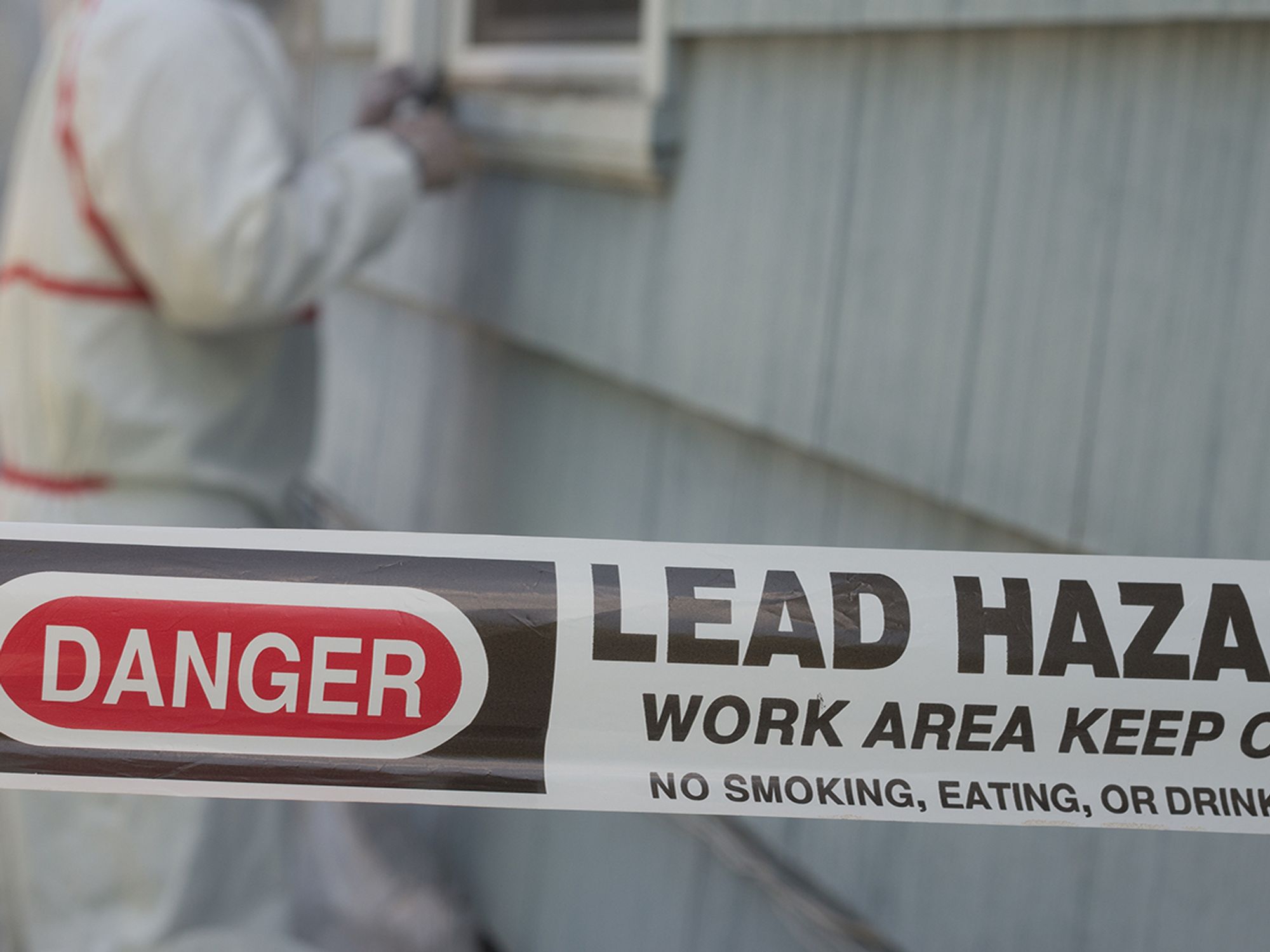TSCA Title IV Lead Exposure Reduction

- Title IV aims to accelerate federal efforts to reduce risks to young children who are exposed daily to lead-based paint in their homes.
- Title IV directs EPA to establish a clearinghouse and hotline to distribute information about the hazards of lead-based paint, how to avoid exposure and reduce risk, and new technologies for removing or immobilizing lead-based paint.
- Title IV authorizes states to propose programs to train and certify inspectors and contractors engaged in the detection or control of lead-based paint hazards.
Congress added Title IV to the Toxic Substances Control Act (TSCA) when it enacted the Residential Lead-Based Paint Hazard Reduction Act of 1992 as Title X in the Housing and Community Development Act of 1992. TSCA Title IV aims to accelerate federal efforts to reduce risks to young children who are exposed daily to lead-based paint in their homes. In addition, it was intended to stimulate development of lead inspection and hazard abatement services in the private sector, while ensuring that the services provided and any products employed are reliable and effective in reducing risk. To these ends, Title IV directs the Environmental Protection Agency (EPA) to:
- Promulgate definitions of lead-contaminated dust, lead-contaminated soil, and lead-based paint hazards;
- Ensure that people engaged in detection and control of lead hazards are properly trained and that contractors are certified;
- Publish requirements for the accreditation of training programs for workers;
- Develop criteria to evaluate the effectiveness of commercial products used to detect or reduce risks associated with lead-based paint;
- Establish protocols, criteria, and minimum performance standards for laboratory analysis of lead in paint films, soil, and dust;
- Establish a program to certify laboratories as qualified to test substances for lead content; and
- Publish and distribute to the public a list of certified or accredited environmental sampling laboratories.
Title IV explicitly applies these requirements to federal facilities and activities that may create a lead hazard. In addition, Congress directed EPA to conduct a study of lead hazards due to renovation and remodeling activities that may incidentally disturb lead-based paint. EPA is required to promulgate guidelines for the renovation and remodeling of buildings or other structures when these activities might create a hazard.
Title IV directs EPA to establish a clearinghouse and hotline to distribute information about the hazards of lead-based paint, how to avoid exposure and reduce risk, and new technologies for removing or immobilizing lead-based paint. In addition, Congress mandated development of a lead hazard information pamphlet; public education and outreach activities for health professionals, the general public, homeowners, landlords, tenants, consumers of home improvement products, the residential real estate industry, and the home renovation industry; and information to be distributed by retailers of home improvement products to provide consumers with practical information related to the hazards of renovation where lead-based paint may be present.
Title IV authorizes states to propose programs to train and certify inspectors and contractors engaged in the detection or control of lead-based paint hazards. States also may develop the required informational pamphlets. TSCA requires EPA to promulgate a model state program that may be adopted by any state. Congress gave EPA the authority to approve or disapprove authorization for state proposals and to provide grants for states to develop and implement authorized programs. A federal program must be established, administered, and enforced by EPA in each state without an authorized program.
The Department of Health and Human Services also has responsibilities under Title IV of TSCA. It mandates a study by the Centers for Disease Prevention and Control (CDC) and the National Institute for Environmental Health Sciences to determine the sources of lead exposure to children who have elevated lead levels in their bodies. The National Institute for Occupational Safety and Health (NIOSH) is directed to study ways of reducing occupational exposure to lead during abatement activities.
The Act established a rulemaking docket to ensure the availability to the general public of all documents submitted to agencies that are relevant to regulatory decisions pursuant to this legislation. The docket is required to include the drafts of all proposed rules submitted by EPA to the White House Office of Management and Budget (OMB), written comments on the drafts, and written responses to comments. EPA must provide an explanation for any major change to a proposed rule that appears in a final rule, and such changes may not be made based on information not filed in the docket. Dockets are required to be established in each EPA regional office.
In addition to amending TSCA, Title X of the Housing and Community Development Act of 1992 authorized:
- Grants to states for risk assessments and lead-based paint removal and immobilization in private housing for low-income residents;
- State training, certification, or accreditation programs for inspectors and abatement contractors; and
- Research at the Department of Housing and Urban Development (HUD).
Authorization for appropriations for these grants expired September 30, 1994, but appropriations have continued. Title X directed HUD to establish guidelines for federally supported work involving risk assessments, inspections, interim controls, and abatement of lead-based paint hazards. In addition, the NIOSH was provided $10 million for training people who remove or immobilize paint.
Finally, Congress authorized to be appropriated “such sums as may be necessary” for TSCA Title IV.
